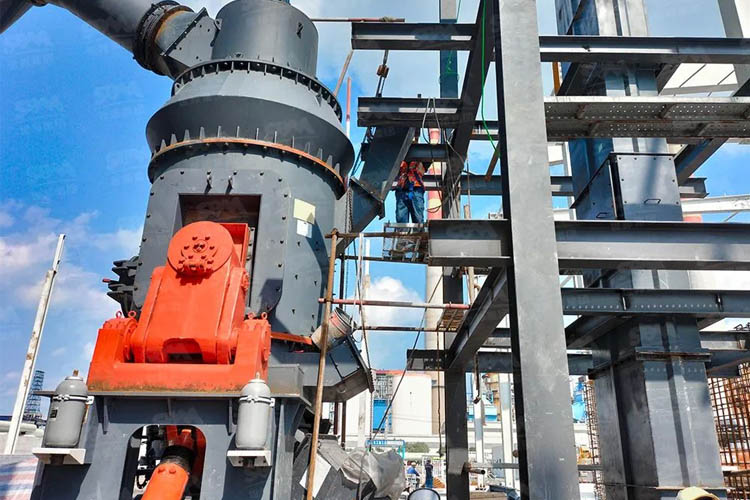How to choose the suitable grinding mill for non-metallic mines?
As we all know, for non-metallic ore processing, one is to remove impurities and improve product purity; The second is to reduce the particle size of the product to varying degrees.

In the process of reducing product particle size, the choice of grinding equipment is crucial, which directly affects mineral utilization, production costs, product quality and economic benefits. In general, the following aspects need to be considered:
1. Raw material hardness. The hardness of raw materials is the basis of equipment selection, which is related to the investment of equipment host, auxiliary machine, infrastructure investment, operating cost and many other aspects. If Raymond Mill is selected to process ultrafine quartz powder, it is necessary to apply enough pressure to crush the pressurized (hydraulic or mechanical) system, and the increase of pressure increases the manufacturing cost and operating cost of the equipment, especially the reliability of the grinding roller and grinding disc is greatly reduced, the failure rate of the pressurized system increases, and the equipment shutdown and maintenance costs rise sharply.
2. Product fineness and particle shape. Product particle size and its distribution and product particle shape is one of the most basic and important indicators in the industrial application of non-metallic mineral products, product fineness and particle size distribution depend on the grading equipment, particle shape and grinding method are inseparable.
3. Product purity. Many downstream application fields have certain requirements for metal oxides and whiteness indicators such as iron oxide and titanium oxide of non-metallic mineral powder products, so the treatment of impurities is the biggest taboo and difficulty in non-metallic mineral processing, and it is also a difficult problem to solve in the total investment. When selecting mills and classifiers, the wear and material of the equipment must be considered, and strict isolation measures must be taken without relaxation in all parts of the equipment in contact with the material if necessary.
4. Product variety and output. Where possible, it is best to use a process production (process) line, which requires a comparison of optional milling equipment that can achieve product fineness, and a single equipment can meet the output requirements of large-scale equipment on the basis of comparison. Because in general, the fewer production lines, the more convenient it is to manage, compared with multiple small equipment, the unit product energy consumption and production cost of a single large equipment are lower.
5. Energy consumption per unit product. Energy consumption is an important part of product cost, and the selection of energy consumption and equipment can be considered from the aspects of finished product quality and mineral utilization rate of non-metallic mineral ultrafine powder.
6. Running costs are also often overlooked by investors. According to the system composition and working principle of the equipment, a detailed understanding of the actual situation of wearing parts, consumable materials and moving parts, such as: reliability, life, cost, maintenance time, replacement mode, degree of automation, knowledge requirements of operators, etc., so as to determine the choice of equipment and calculate the investment cost.
7. The capital cost mainly includes the basic characteristics of the equipment, such as: the material characteristics of the excavation foundation, the construction and management of the bearing foundation, the occupied area, the height and span of the plant, building materials, etc. For example, the origin supply of the airflow mill is supplied by the compressor of special equipment, and its basic requirements are costly. These should be carefully considered by investors.